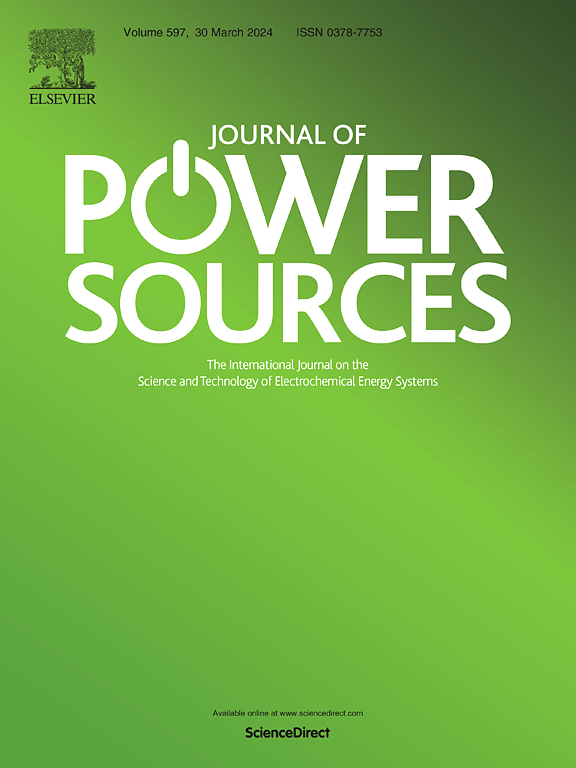Tetra-heteroatom natural-doped activated carbon derived from cocoa leaf waste for advanced symmetric supercapacitors
IF 8.1
2区 工程技术
Q1 CHEMISTRY, PHYSICAL
引用次数: 0
Abstract
The high-value utilization and sustainable development of biomass-based energy provided a feasible route to solve the energy shortage and environmental problems. Here, a facile and efficient technique to obtain activated carbon was innovatively developed in this work using a one-step physicochemical activation method combined with the tetra-heteroatom natural-doped strategy from cocoa leaf waste. The obtained activated carbon materials (CLAC850) have a high Brunauer-Emmet-Teller surface area (SBET) of 379 m2 g−1 with a maximum specific capacitance (Cs) of 202 F g−1 at 1 A g−1 and a significant number of heteroatoms (O: 26.42 at.%, Mg: 1.36 at.%, Si: 5.65 at.%, and Ca: 1.95 at.%). The device also delivers a high specific energy of 28.7 Wh kg−1 at 535.3 W kg−1. Overall, this work demonstrated that the natural heteroatom-doped strategy was beneficial for growth of heteroatom functional groups, which provide a combination of EDLC and pseudocapacitance behavior. The findings indicate a new facile and efficient route for synthesizing activated carbon with natural heteroatom-doped for symmetric and asymmetric supercapacitor applications.

求助全文
约1分钟内获得全文
求助全文
来源期刊

Journal of Power Sources
工程技术-电化学
CiteScore
16.40
自引率
6.50%
发文量
1249
审稿时长
36 days
期刊介绍:
The Journal of Power Sources is a publication catering to researchers and technologists interested in various aspects of the science, technology, and applications of electrochemical power sources. It covers original research and reviews on primary and secondary batteries, fuel cells, supercapacitors, and photo-electrochemical cells.
Topics considered include the research, development and applications of nanomaterials and novel componentry for these devices. Examples of applications of these electrochemical power sources include:
• Portable electronics
• Electric and Hybrid Electric Vehicles
• Uninterruptible Power Supply (UPS) systems
• Storage of renewable energy
• Satellites and deep space probes
• Boats and ships, drones and aircrafts
• Wearable energy storage systems
 求助内容:
求助内容: 应助结果提醒方式:
应助结果提醒方式:


